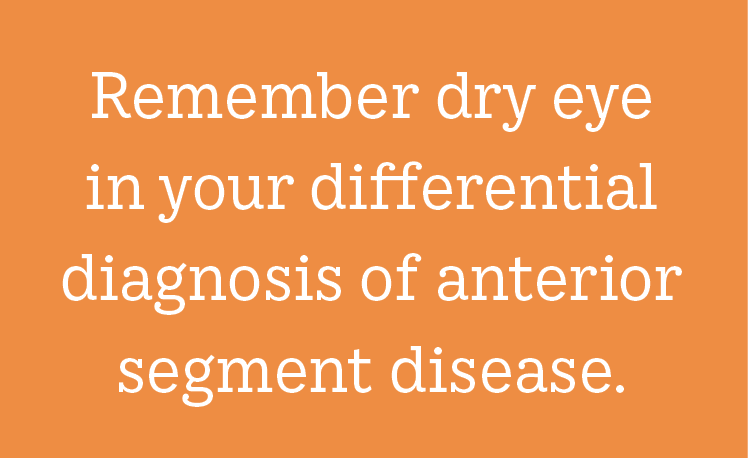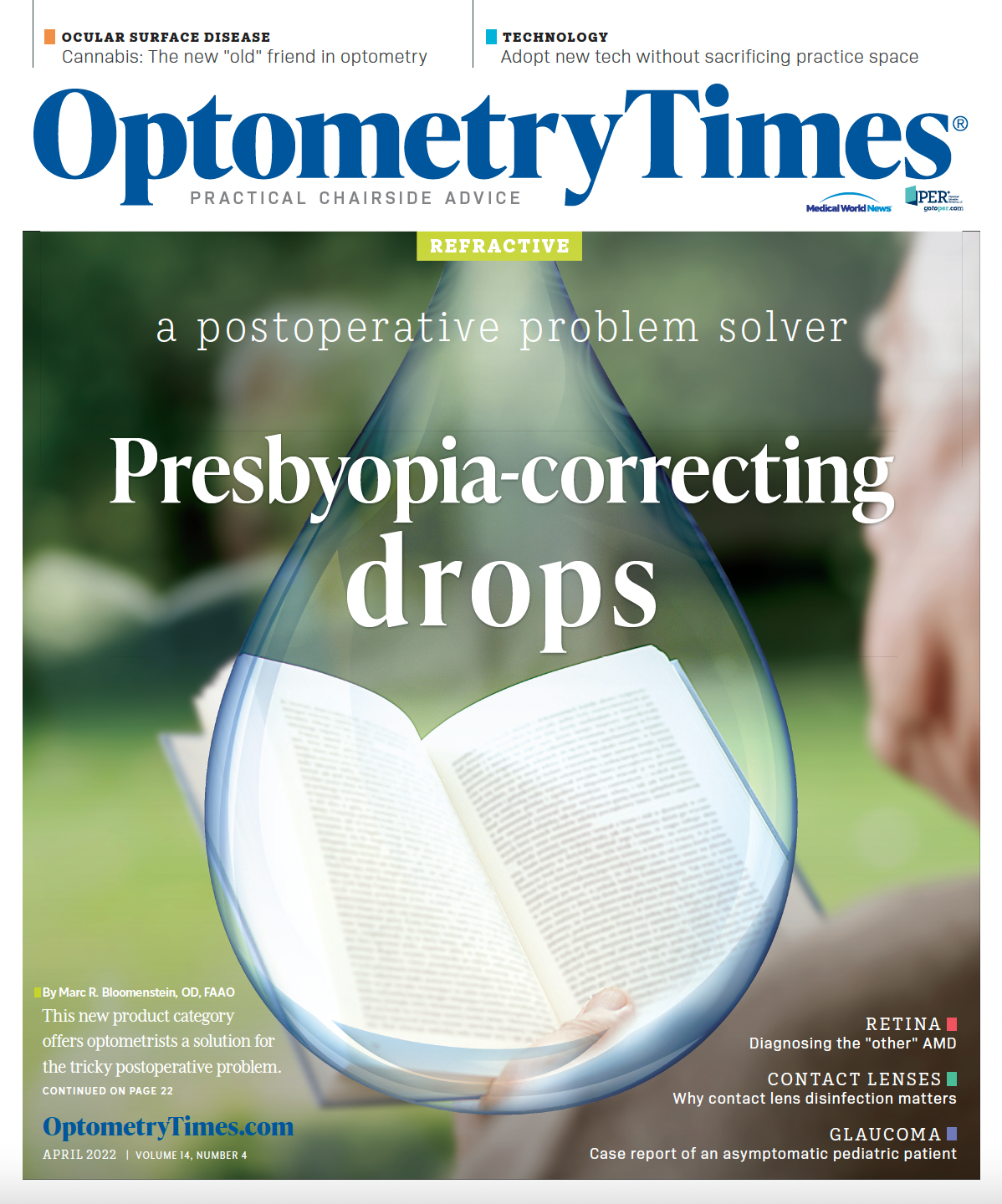Dry eye appears in an unlikely subject
Canine patient case study reveals a surprising diagnosis


I have spent the better part of my career working to understand the ocular surface—particularly the tear film: why it works and why, often, it does not.
Those who know me are aware of the fact that I believe we are all on the road to dry eye, albeit at a different stage on the journey or along a different path to symptomatic ocular surface disease.
I, and many other colleagues who focus on this topic, offer tips and tidbits of knowledge, advice and admonitions, and treatment protocols and therapies to assuage the fallout of this challenging and changing disease.
The first step, we all agree, is to recognize the disease when it presents itself and be attentive to its sometimes-subtle clues and characteristics.

The patient
Gigi, a 14-year-old patient who does not wear contact lens, presented with red conjunctivae, more obvious in one eye than the other, and a copious discharge. Her corneas were clear. Some ocular irritation was present as she rubbed her eyes.
As Gigi had a history of spending a lot of time in the local park, being fond of the foliage, and interested in the characteristics of the soil and trees, I was concerned she had an infectious conjunctivitis and treated her accordingly.
Her eye redness resolved with therapy, but returned less than a week later, and then again. Clearly I was missing something.
Monitoring the case, my patient returned exhibiting continuous eye irritation and itch with more frequent eye rubbing.
Was this an allergy?
I shifted therapy to an anti-inflammatory. The conjunctivae brightened and I was pleased with my clinical acumen.
A few days after the medication course ended, the patient came to me again with the same eye gumminess and redness.
Confounded, I doubled back on my clinical exam and, attentive to my own teaching, concentrated my attention on the patient’s eyelashes. I considered that her fine, short eyelashes were the red-eye provoking culprits.
However, try as I might, I was unable to convince myself that these soft hairs were abrasive enough to mount trouble. In fact, for as long as I have known the patient, these eyelashes have remained unchanged.
Fast forward, I met a friend, Rufus, in our apartment building foyer. Rufus was headed to the park for a stroll.
From my vantage point, I noticed that Rufus had a thick, ropey white discharge in both eyes that looked like the eye discharge my patient exhibited. Rufus was accompanied by his companion, who noticed my alarm.
Quickly she said, “Oh it’s not contagious; Rufus has dry eye.”
Like a ton of bricks, and surely a blow to my diagnostic skills, my patient’s diagnosis became clear: Gigi had dry eye. Rufus is a 12-year-old French Bulldog and Gigi is my pet Shih Tzu.
I had overlooked the signs and symptoms of dry eye, attributing the issue to anything but the true cause of eye inflammation and discharge.
Treating these patients
Canines with dry eye typically have infected conjunctiva with a thick mucoid discharge. A prominent nictitans (third eyelid) may be present. They may squint frequently and blink excessively or keep their eyes closed.
The dog may paw at their eye more than normal or shy away from the area being touched. These signs are often bilateral.1
Dry eye generally occurs in dogs between 4 and 6 years old but can happen at any age. Flat-faced breeds and breeds with large, protruding eyes, such as Shih Tzus, pugs, and Boston terriers, are more susceptible to dry eye.2
Two common ophthalmic medications offered by veterinarians to stimulate tear production are cyclosporine and tacrolimus.
Veterinarians recommend gentle eye cleaning around the eye several times a day with a warm, wet washcloth. Untreated canine dry eye can result in corneal ulceration, vascularization, and/or hyperpigmentation and scarring.1
Because I was unfamiliar with canine dry eye signs and symptoms, I misdiagnosed my pet’s eye disease.
From my own experience, it is clear to me how easily we can misdiagnose or underdiagnose our human patients with a dysfunctional tear film.
Please remember dry eye in your differential diagnosis of anterior segment disease.
As for Gigi, she still awakens with a bit of eye redness, but continues to improve with frequent eye lubrication and gentle evening lid hygiene.
References
1. Hunter T, Ward E. Keratoconjunctivitis sicca (KCS) or dry eye in dogs. VCA Animal Hospitals. Accessed December 20, 2021. https://vcahospitals.com/know-your-pet/keratoconjunctivitis-sicca-kcs-or-dry-eye-in-dogs
2. Don’t overlook dry eye in dogs. University of Illinois Urbana-Champaign College of Veterinary Medicine. December 23, 2019. Accessed December 20, 2021. https://vetmed.illinois.edu/pet-health-columns/dry-eye-dogs/

Newsletter
Want more insights like this? Subscribe to Optometry Times and get clinical pearls and practice tips delivered straight to your inbox.





.png&w=3840&q=75)






















